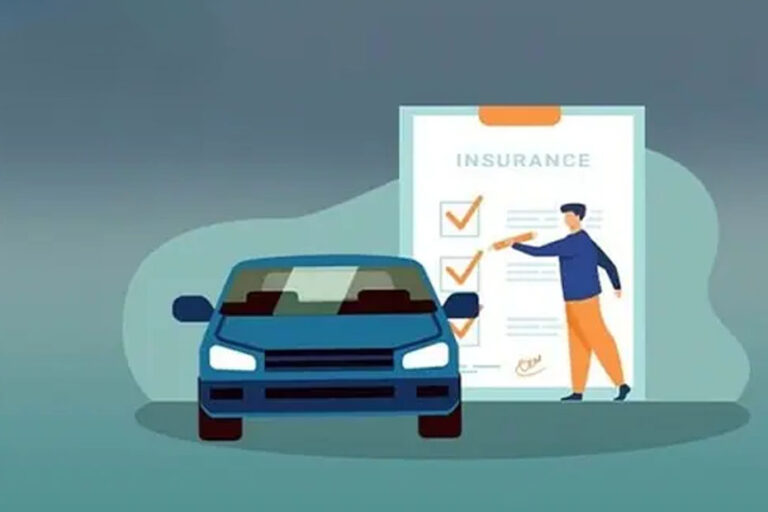
Auto accidents are a stark reminder of how quickly things can go wrong on the road. By understanding the common causes of crashes, you can make smarter choices and stay safer behind the wheel. Here’s a closer look at the top reasons for auto accidents and some tips on how to avoid them.
- Distracted Driving
Distracted driving is a leading cause of car accidents. It’s easy to get sidetracked with your phone, GPS, or even a conversation with a passenger. These distractions can divert your attention away from the road, leading to potentially dangerous situations.
Texting and Phone Calls: Handling your phone while driving dramatically increases your risk of an accident. Even quick interactions can take your eyes off the road long enough to cause a serious crash.
In-Car Technology: While modern vehicles come equipped with advanced infotainment systems, using these features while driving can also be distracting. Adjusting settings or entering navigation details while on the move can be risky.
To minimize distractions, consider using hands-free devices or pull over if you need to make a call or adjust your settings. Keeping your focus on driving is crucial for your safety and that of others. And, of course, if you’ve been injured because of another driver who was distracted at the time, you need first-rate legal representation for crash victims to get the compensation you deserve. You shouldn’t have to suffer because of someone else’s negligence.
- Speeding
Speeding reduces your ability to respond to sudden changes and increases the severity of collisions. The faster you drive, the less time you have to react to unexpected events, such as a car suddenly stopping in front of you or a pedestrian crossing the street.
Speeding Consequences:
- Reduced Reaction Time: Higher speeds make it harder to stop quickly or navigate around obstacles. This reduced reaction time can turn a near-miss into a serious accident.
- Increased Impact: Collisions at higher speeds result in more severe damage and a greater risk of injury. The force of impact grows exponentially with speed, making even minor accidents potentially dangerous.
Obeying speed limits and adjusting your speed based on road and weather conditions can help you stay in control and avoid accidents.
- Drunk Driving
Driving under the influence of alcohol or drugs impairs your judgment, coordination, and reaction time. Alcohol slows down brain function and can make even familiar driving tasks feel overwhelming.
Impact of Impairment:
- Slowed Reflexes: Alcohol affects your reaction time, making it harder to respond quickly to changes in traffic or road conditions.
- Poor Decision-Making: Impaired drivers are more likely to engage in risky behaviors, such as speeding or failing to signal lane changes.
Avoid driving if you’ve been drinking or using substances that can impair your ability to drive. Opt for alternative transportation methods like taxis or rideshare services if needed.
- Fatigue
Driving while tired can be as dangerous as driving under the influence. Fatigue impairs your ability to focus and react promptly, making it harder to stay alert on the road.
Signs of Fatigue:
Yawning and Heavy Eyelids
These are clear indicators that you’re too tired to drive safely. If you find yourself struggling to keep your eyes open, it’s time to pull over and rest.
Difficulty Concentrating
Feeling unable to concentrate on driving tasks or becoming easily distracted can be a sign of fatigue.
Make sure you’re well-rested before hitting the road, especially for long trips. Taking breaks and getting adequate sleep can help you stay alert and reduce the risk of accidents.
- Aggressive Driving
Aggressive driving involves behaviors like tailgating, speeding, and making erratic lane changes. This type of driving creates a dangerous environment for everyone on the road.
Aggressive Driving Risks:
Tailgating
Following too closely behind another vehicle can lead to rear-end collisions if the driver in front suddenly stops or slows down.
Erratic Maneuvers
Frequent and sudden lane changes can surprise other drivers and lead to accidents. Aggressive drivers often disregard traffic rules, increasing the risk of collisions.
Maintaining a calm demeanor and giving other drivers plenty of space can help reduce the chances of encountering aggressive drivers and making the roads safer for everyone.
- Weather Conditions
Adverse weather conditions, such as rain, snow, or fog, can make driving more hazardous. These conditions affect your vehicle’s traction and visibility, increasing the likelihood of accidents.
Weather-Related Hazards:
Reduced Visibility
Fog, heavy rain, or snow can significantly reduce how far ahead you can see, making it harder to spot hazards or other vehicles.
Slippery Roads
Snow and ice can cause your vehicle to lose traction, making it more difficult to control and stop.
Adjust your driving to match weather conditions. Slow down, increase your following distance, and use your headlights appropriately to enhance visibility and maintain control of your vehicle.
- Poor Road Conditions
Roads in disrepair, such as those with potholes or uneven surfaces, can be dangerous. These conditions can cause accidents by affecting vehicle control or creating unexpected hazards.
Road Condition Issues:
- Potholes: Driving over potholes at high speeds can cause damage to your vehicle or lead to a loss of control.
- Poorly Marked Roads: Roads with faded or missing markings can confuse drivers and lead to accidents, particularly at intersections or merges.
Stay vigilant and adjust your driving to account for road conditions. If possible, avoid driving on poorly maintained roads, and report hazardous conditions to local authorities.
- Mechanical Failures
Mechanical failures, such as brake malfunctions or tire blowouts, can lead to accidents if not properly addressed. Regular vehicle maintenance is essential to prevent such issues.
Common Mechanical Issues:
- Brake Failure: Faulty brakes can drastically reduce your ability to stop, increasing the risk of collisions. Regular checks and timely replacements of brake components are crucial.
- Tire Issues: Worn-out or damaged tires can lead to blowouts or loss of traction, making it difficult to control your vehicle.
Keeping up with regular maintenance and addressing any vehicle issues promptly can help ensure that your car remains safe and reliable.
- Running Red Lights
Running red lights can lead to dangerous intersection accidents, often involving high-speed side impacts. This type of violation not only endangers you but also other drivers and pedestrians.
Risks of Running Red Lights:
Intersection Collisions
Side impacts from running red lights can result in severe injuries due to the high forces involved in such collisions.
Increased Fatalities
High-speed crashes at intersections often lead to fatal outcomes or serious injuries.
Always obey traffic signals and exercise caution at intersections. Running red lights is a serious risk and can have tragic consequences.
- Not Using Seatbelts
Wearing a seatbelt is a simple yet crucial safety measure that can prevent severe injuries or fatalities in the event of a crash. Seatbelts help keep you secure and minimize movement during an accident.
Benefits of Seatbelt Use:
- Injury Reduction: Seatbelts reduce the risk of serious injuries by keeping you in place and reducing the impact force during a collision.
- Legal Requirement: In many areas, wearing a seatbelt is not just a safety measure but a legal requirement, with penalties for non-compliance.
Always buckle up before driving and ensure that all passengers in your vehicle do the same. It’s a small action that can make a big difference in protecting everyone on board.
Stay Safe on the Road
Understanding these common causes of auto accidents can help you make more informed and safer driving decisions. By staying aware, avoiding distractions, and adhering to safe driving practices, you can reduce the risk of accidents and contribute to a safer driving environment for everyone. Drive responsibly and prioritize safety on every journey.
Write and Win: Participate in Creative writing Contest & International Essay Contest and win fabulous prizes.


